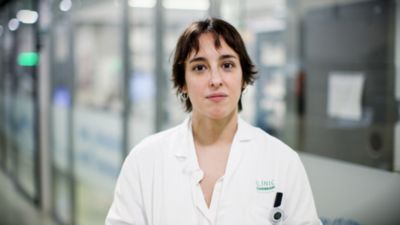
Pathology in the cloud: why a cloud-based archive makes sense for digital pathology
- By Philips
- July 29 2025
- 2 min read
With an estimated 70% of important medical decisions involving laboratory or pathology tests [1], the efficient availability of digitally stored pathology images is especially important to prevent information bottlenecks that can have a significant impact on patient care. Particularly in cancer cases, a care team of radiologists, oncologists and pathologists need tools to collaborate effectively, and a cloud-based archive provides access to pathology results even when the care team is geographically dispersed.
At-a-glance:
- Cloud-based archives are a secure, efficient way for hospitals to manage large amounts of digital pathology data while decreasing the burden on internal resources
- Cloud-based archives support effective remote collaboration among pathologists and colleagues and specialists
- Scalability accommodates the computing resources required by artificial intelligence tools

Hospital Clínic de Barcelona chooses cloud-based digital pathology archive
When Hospital Clínic de Barcelona initiated a project to digitize its pathology department, it chose a cloud-based archive as an effective way to manage its large volume of digital pathology information. The hospital’s anatomical pathology service performs more than 50,000 biopsy diagnoses annually, for which more than 200,000 histological preparations are required. Stored onsite, these studies would require significant resources in terms of servers, IT staff, air-conditioning, energy and physical space.
Hospitals are increasingly storing data in the cloud for a host of applications; 83% of healthcare organizations in Europe and North America now use cloud-based solutions [2].
Collaboration is key to care
Digital pathology enables pathologists to consult with colleagues and specialists remotely. This is particularly beneficial for obtaining second opinions or expert advice without the need for physical slide transfers. Remote consultation can be done in real-time, allowing for immediate feedback and decision-making, which is crucial in urgent cases.
Pathologists in the same hospital network can share the same cloud archive, eliminating data silos and enabling pathologists at one site to read and analyze cases from patients at other sites.
Especially in complex pathologies, it ensures that the specialist with the most expertise in a particular condition is the one reviewing the case.

Adela Saco, M.D.
Anatomical Pathology Specialist
Hospital Clínic de Barcelona
Scalability accommodates artificial intelligence tools
As Hospital Clínic de Barcelona and many other hospitals around the world have found, digital pathology particularly benefits from the ability of cloud archives to scale to handle large amounts of data. The scalable nature of cloud archives also accommodates the computing resources that are required by powerful artificial intelligence (AI) tools developed to assist pathologists.
“By harnessing the power of the cloud to accelerate the digitization of pathology, we are improving the quality of patient care by enabling greater workflow efficiency and collaboration at scale,” said Shez Partovi, Chief Innovation & Strategy Officer and Chief Business Leader Enterprise Informatics at Philips. “As the demand for pathology-based diagnosis continues to increase, we see digital pathology in the cloud as a critical enabler for productivity, scale and to further transform healthcare diagnostics by opening new avenues for research, education, and the integration of AI to further improve patient care.”
Benefits research and health equity
Beyond the daily advantages for patient care, cloud archives also provide researchers with a secure source of data from a large pool of patients. These large data sets allow researchers to investigate pathologies on a scale that is impossible with siloed data and could have far-reaching consequences for many diseases. Digital pathology and diagnostic data in the cloud also has the potential to improve the precision and speed of diagnosis and potentially even close gaps in health equity. Martijn Hartjes, Clinical Informatics Business Leader at Philips, noted, “We should not underestimate the power of cloud. It will enable scalability and access to care, and the ability to unlock data from different silos. Bringing together all the data to create a live patient view at any time during the patient journey for any clinician to look at and make a much more profound decision on the next step for that patient is going to be very critical. We always say there is a wealth of data and a poverty of insights, and combining AI technology with cloud technology can really be a gamechanger – in digital pathology, but in all other areas as well [3].”
Copy this URLto share this story with your professional network
Sign up for news and updates

Footnotes
- Report of the Second Phase of the Review of NHS Pathology Services in England, Lord Carter of Coles (2008). Results are specific to the institution where they were obtained and may not reflect the results achievable at other institutions.
- Healthcare Data Storage Market Size, Share and Segmentation by Type of Storage (On-premise storage, Cloud-based storage, Hybrid storage), By Deployment Model (Public Cloud, Private Cloud, Hybrid Cloud), By End User, by Regions| Global Forecast 2024-2032. S&S Insider. June 2022.
- Becker’s Healthcare Podcast. Hospitals have an imperative to drive efficient care delivery: How innovation in digital pathology can help. September 17, 2024.
Disclaimer
Results are specific to the institution where they were obtained and may not reflect the results achievable at other institutions.
The information presented represents the views of the institution and speaking physicians, and not the views of Philips.
